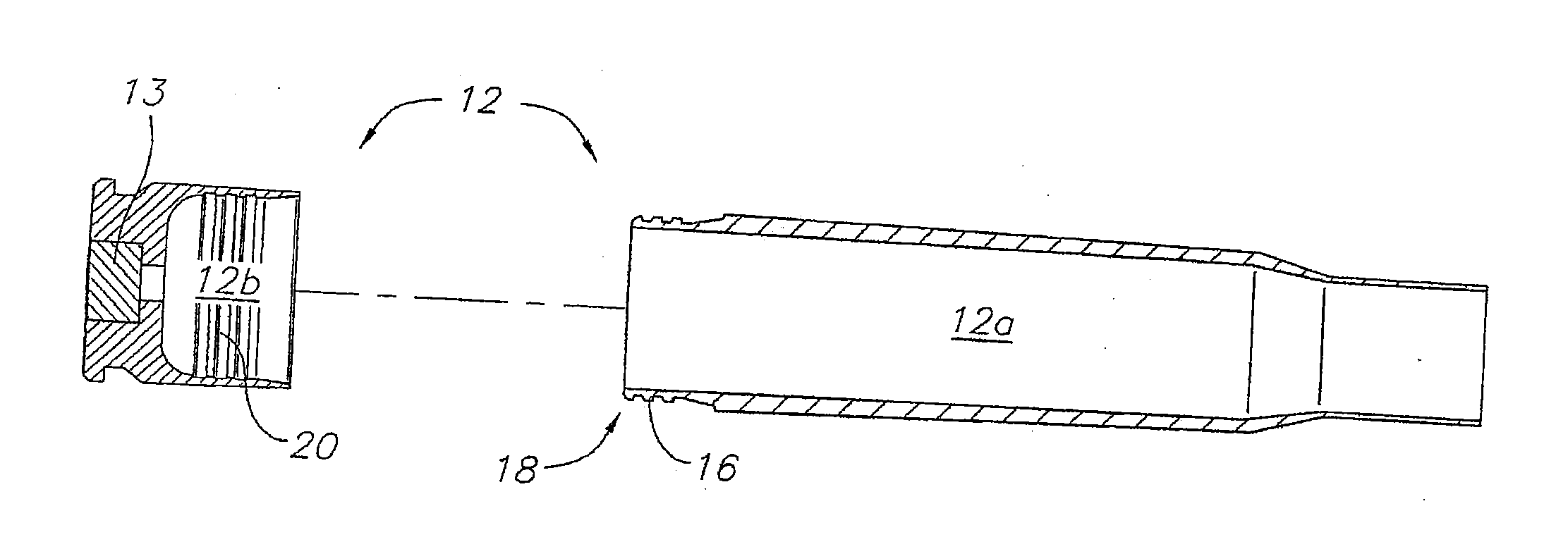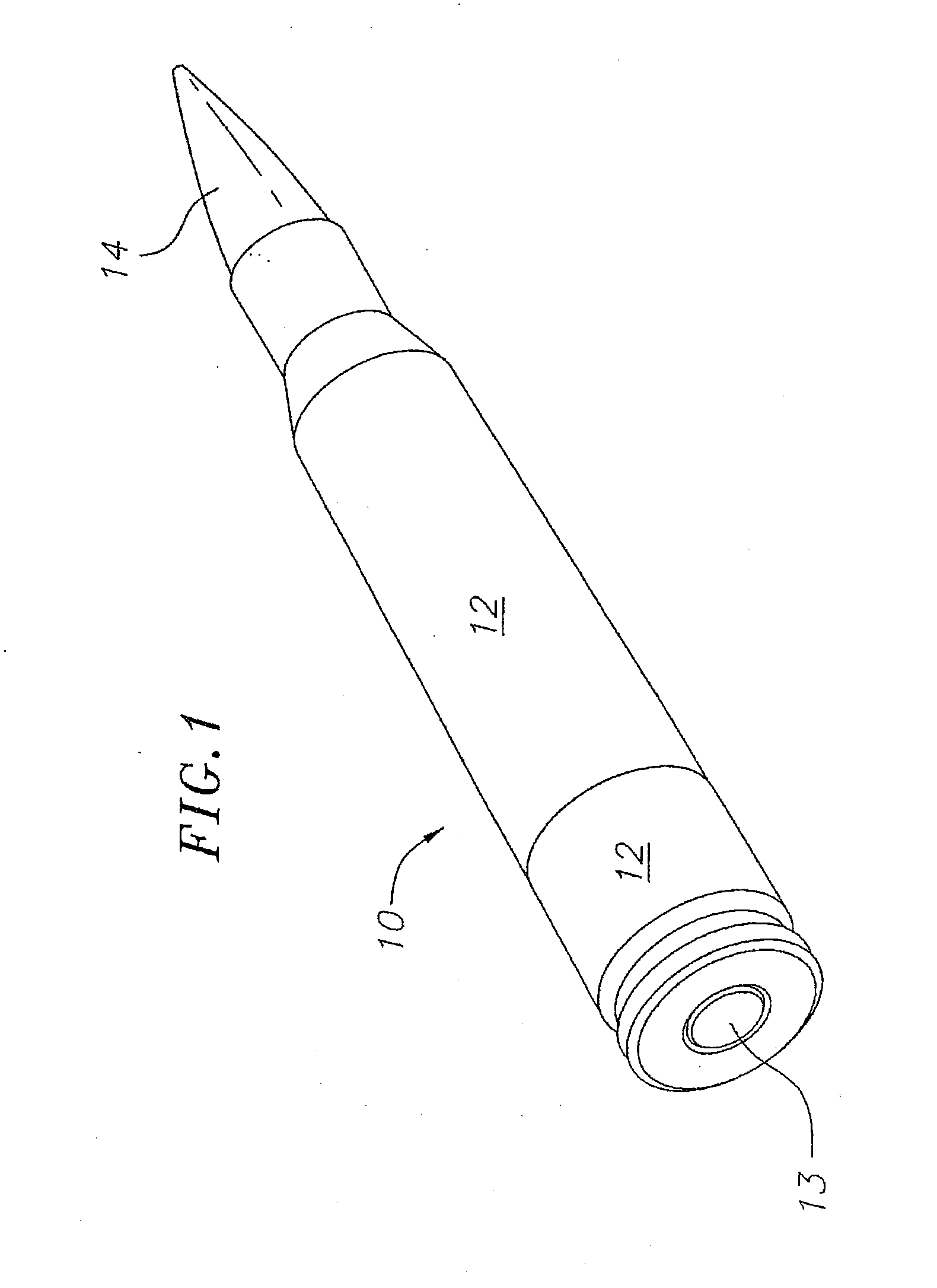Polymerica material suitable for making ammunition cartridge casings
a polymeric material and cartridge technology, applied in the field of ammunition cartridge casings, can solve the problems of aluminum cartridge casings suffering, heavy weight and corrosion concerns, and elusive success
- Summary
- Abstract
- Description
- Claims
- Application Information
AI Technical Summary
Benefits of technology
Problems solved by technology
Method used
Image
Examples
example 1
[0086]Four lightweight polymeric ammunition articles (0.50-caliber / 12.7 mm) were assembled from injection molded S—PC (Lexan® EXL 9330) caselets and caps machined from a steel alloy (P20). Each cap had a pre-installed primer (CCI #41). The caselets were designed with ridges around the rearward portion which created a snap interference fit with corresponding grooves on the cap interior, thus joining the caselet and cap securely. The cartridges were then filled with propellant. (220 grains of WC 860). After loading the propellant, the projectiles (647 grains) were inserted into the cartridge and attached using an adhesive.
[0087]The assembled caselet geometry was modeled after standard brass 0.50 caliber ammunition including a wall thickness ranging from 0.0016 inch at its forward end to a maximum thickness of 0.0039 inch along its length.
[0088]After assembling four ammunition articles, the articles were test fired utilizing a single shot, 0.50-caliber rifle (Serbu BFG-50) instrumented...
example 2
[0089]The procedure outlined in Example 1 was repeated using a different caselet material. Four lightweight polymeric ammunition articles (0.50-caliber / 12.7 mm) were assembled using caselets injection molded from B—PC (Makrolon® DP1-1848). The steel caps, propellant loads, and projectiles were identical to those used in Example 1. Measured pressures and velocities were comparable to those obtained using brass ammunition, and all four cartridge casings survived the firing intact.
example 3
[0090]The procedure outlined in Example 1 was repeated using a different caselet material. Four lightweight polymeric ammunition articles (0.50-caliber / 12.7 mm) were assembled using caselets injection molded from PPSU (Radel® R-5800 NT). The steel caps, propellant loads, and projectiles were identical to those used in Example 1. Measured pressures and velocities were comparable to those obtained using brass ammunition, and all four cartridge casings survived the firing intact.
PUM
| Property | Measurement | Unit |
|---|---|---|
| mol % | aaaaa | aaaaa |
| temperature flexural modulus | aaaaa | aaaaa |
| temperature | aaaaa | aaaaa |
Abstract
Description
Claims
Application Information
 Login to View More
Login to View More - R&D
- Intellectual Property
- Life Sciences
- Materials
- Tech Scout
- Unparalleled Data Quality
- Higher Quality Content
- 60% Fewer Hallucinations
Browse by: Latest US Patents, China's latest patents, Technical Efficacy Thesaurus, Application Domain, Technology Topic, Popular Technical Reports.
© 2025 PatSnap. All rights reserved.Legal|Privacy policy|Modern Slavery Act Transparency Statement|Sitemap|About US| Contact US: help@patsnap.com



